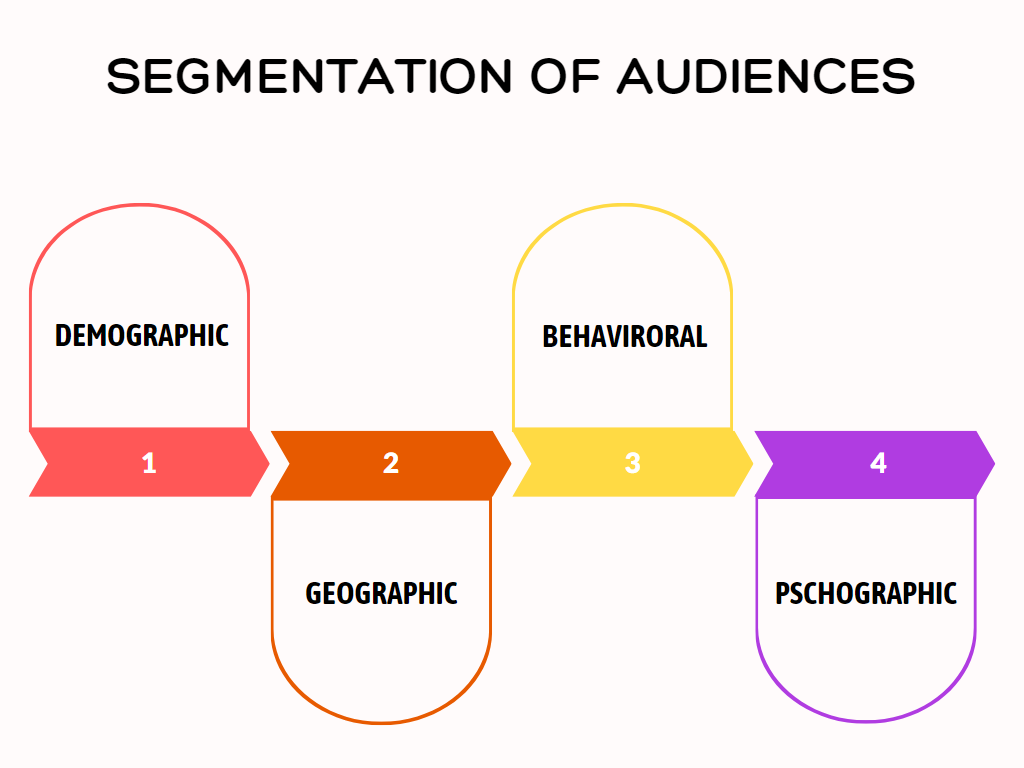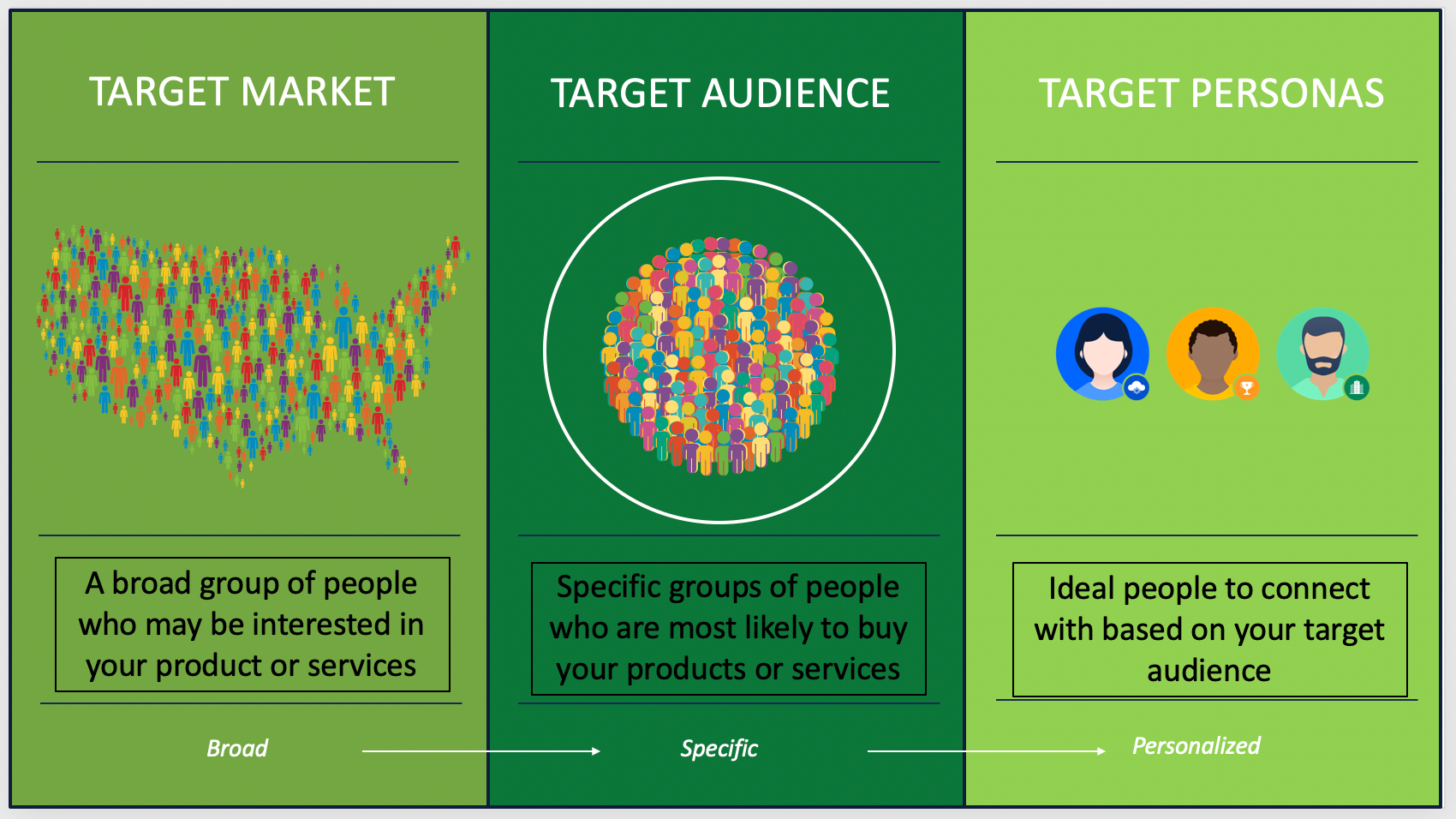A target audience is a particular group of people to whom a product is aimed. Targeting an audience is the foundation of any successful marketing strategy. Here is an article to help you understand how to create a target audience for your business.
Page Contents:
Why Target Audience?
There are a lot of benefits to targeting audiences. According to research by sales mango, 77% of marketing return of investment are from the target audience. Untargeted ads and campaigns take time and money to return assets. Here is a short list of some of the benefits of targeting the audience of targeted audiences:
- It helps to connect directly with the specific audiences
- Attracts high-quality leads
- Make a branding effective
- Develops a deeper trust and improve customer relations
- Drive more revenue from less investment
When you specifically target a group of people, it improves your marketing ability. You cannot approach everyone or anyone who may need or may not need your services. Targeting audiences provide a clear focus on the quality of customers, Thus creating a manageable level of audience.
Since you have understood the importance of the target audience, let us now understand the first stage of creating a target audience: audience segmentation.
Audience Segmentation
Segmentation is an essential marketing strategy. The process of segmentation is identifying subgroups and making personalized marketing efforts. Segmentation lets you define your target audience. It limits your messages and campaigns to appeal to particular audiences specifically.
Types of segmentation:
Marketers classify audiences based on demographics, behavioral patterns, location, etc. let us now discuss each of them in detail:
1. Demographic segmentation:
When you sort audiences based on their age, gender, education, income, etc., it is said to be demographic segmentation. It is the most common and straightforward type of segmentation. Yet it is the broadest and most effective segmentation. Further demographic segmentation has the following types:
Based on age: age is the most critical factor in demographics. People of different generations’ choices, needs, and thinking processes differ. The same age group people have similar needs. You cannot strategies the same campaigns for different generations.
Based on gender: males and females have different thinking processes. Marketers also believe that products and services must be customized separately for men and women. Now from bags to cars, everything has gender-specific designs and even the marketing strategy.
Based on income: manufacturers and marketers see income as a significant factor before the printing of the product. Many brands, like Zara, H&M, etc., produce only for higher income segments; they are preferred as luxury brands. Similarly, many brands of cars, technologies, etc., focus on higher-income segments only.
Based on religion, culture, and race: globalization has increased business opportunities. But still, the cultural belief of people need to be considered before planning a marketing strategy. For example, over 64% of people in India prefer tea over any other drink. Hence the demand for tea in India is higher and thus is the biggest tea consumer in the world.
2. Geographical segmentation:
Grouping people based on economics, food habits, clothing, language, and their live physical location is geographical segmentation. It influences a better understanding of your targeted audience by dividing them based on their countries, states, cities, areas, etc. the benefits of geographical segmentation are as follows:
- It helps to learn more about your target audience
- Make effective marketing plans based on the local needs
- It makes branding easy
- It is cheaper and accessible with a high ROI

3. Behavioral segmentation:
Filtering potential customers based on their response and behavior toward your product or services. The behavioral classification factors may include purchasing similar products, sharing the same hobbies, or having cultural similarities.
Behavioral segmentation helps you to learn to serve your customers better by understanding their needs and wants. By planning marketing campaigns with behavioral and demographic data, you can best classify and identify your audience. the benefits of behavioral segmentation are as follows
- Improving target marketing accuracy
- Analyzing audiences and implementing new ideas for a personalized experience
- Identifying your target audience
- Helping save money
- Building brand loyalty
4. Psychographic segmentation:
Studying and dividing people based on psychographic characteristics like personality, lifestyle, activities, social status, interest, etc. is psychographic segmentation. It is an extension of behavioral segmentation but provides the opinion of customers. These factors greatly impact the decision-making of the customers. The advantages of psychographic segmentation:
- Understanding customer behavior
- Customizing products
- Since it gives psychographic data, it is more effective than other types of segmentation
You should know These four main types of segmentation for targeting audiences. After this, the next question is how to find the target audience. Well, let me explain to you how.
How To Create a Target Audience?
You need to collect and analyze data based on customer activity trends to create a target audience. here is the checklist you can refer
1. Analyze your customer base and conduct customer interviews: first, you need to know what your customers already using your product think about you and how you are helping them.
2. conduct market research: conducting market research is an essential part of targeting audiences. You should first know how a market response is and current market trends before deciding your type of audience.
Analyze competitors: analyzing competitors will give you an idea of how your competitors target audiences. These analyses will specify more accurately how you should plan your strategy.
3. create personas: customer personas are frictional profiles of customers based on demographic, behavioral, and psychographic segmentation data. These are insight reports telling what customers want. Based on these personas, you can identify and target your audience.
4. Find who is not your target audience: suppose you are a blanket brand. Your constant market is only in colder regions. People from hot countries are not your customers. Finding those who are not your customers will alter your audience and help you plan a creative, customized marketing strategy.
5. google analytics is the ultimate tool: google analytics is the best tool to analyze and target audiences. to use google analytics to learn more about your customers, who first need to have
- Google Analytics account
- Google Analytics audience
- Google optimizes container
After completing these three prerequisites. You can now create an audience by following these steps:
- Sign in to your google analytics account,
- Click on admin
- Now, navigate to the property on which you want to filter your audience
- Click on audience definition, and then click on audiences
- Click on a new audience. Based on your current views, your new audience is filtered. If you want to change, then you can click on the edit option.
- Under audience, destination, select 5the accounts for which you need to use these audiences.
- Click ok and then publish.
How Does Targeting An Audience Affect Marketing?
Target marketing has a significant impact on your marketing strategy and outcomes. It helps businesses to break down larger markets into smaller segments.
Marketing strategies that speak directly to your target audiences result in better outcomes. Marketers focusing on large audiences often fails to recognize the smaller groups and personas.

Attracting the right people leads to higher quality leads and sales and gives long-lasting effects. Higher quality leads turn into loyal customers for the business.
Creating your target audiences will separate your business from its competitors and helps you stand out from the competition. These keep your marketing team efficient and focused.